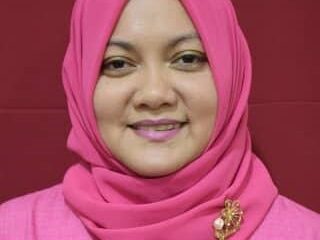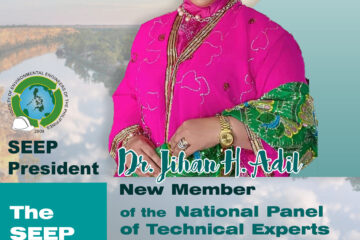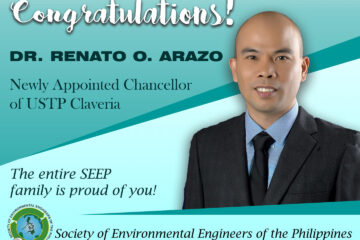EbA CoP connecting with professional groups
The EbA Community of Practice, specifically the core group composed of technical staff from the Environmental Management Bureau-Climate Change Division and focal persons from the various bureaus of the Department of Environment and Natural Resources (DENR) undertook the EbA Orientation Series for the sub-national (regional) level in mid-2016. The design of the EbA Orientation Series included the identification of participants coming from active civil society organizations, professional groups and academia noted to be actively serving the various local governments in the aspects of land use planning, water and environmental quality monitoring as well as in actual nature-based solutions such as mangrove rehabilitation, reforestations engaging vulnerable communities in project sites of the academia and/or research institutions especially relating to waste management as entry point for mitigation with co-benefits.
In Mindanao Island of the Philippines, three regional cluster EbA Orientations were conducted and it was in the regional cluster of Zamboanga provinces that the Society of Environmental Engineers, Inc. participated. From the initial interactions during the EbA Orientation, the president of the SEEP, Inc. Dr. Jihan H. Adil was invited for the national level EbA conferences and fora for the environmental engineering to be further shared in how they do green engineering and articulate their policy advocacies and their initiatives being based in the academic institutions.
The motivation and objective behind this
The objective of the EbA sub-national Orientation Series initiative of the EbA core group with funding from the Environmental Management Bureau-Climate Change Division were three-folds:
- To undertake and demonstrate the global EbA Mainstreaming Project Work
Package 1 – mainstreaming EbA methods and tools; - To increase the number of EbA-oriented individuals whose current initiatives be contributions to evidence-based EbA measures with potential for upscaling in the country; and
- To identify entry points for the local government units’ buy-in of the EbA
- approach and measures as local climate change adaptation options.
On the part of the sub-national DENR-EMB, the motivation is to enhance their community relations with the local governments thru their technical assistance for LGUs needing support to identify their climate change adaptation options thru the use of climate information while also using the ecosystems lens.
Thus, by design of the EbA Orientation Series, the participation of active academic institutions, professional groups (e.g. SEEP, Inc.) and active civil society organizations and provincial governments was purposive. It was also purposive to ensure provincial governments’ buy-in of the EbA approach that the tangible outputs of the EbA orientations were EbA proposals to access the Peoples Survival Fund.
EbA mainstreaming emerging impact from the capacity building series
On the part of the Society of Environmental Engineers of the Philippines, Inc. thru their President and eventually with representatives of their members coming from state universities of the country, they found an ally with the EbA Community of Practice in their quest for green engineering and nature-based solutions needed to demonstrate the relevance of their profession specially in the aspects of pollution control and ecosystems health enhancement, with focus on waste water treatment through engineered natural treatment systems. The SEEP, Inc. also found the platform where they could share the results of their research undertakings and so far, since their participation with the EbA Community of Practice, they have been invited to share their research outputs in two international and one national fora: the International Conference on Sustainable Human Settlements and Development Planning held last July 23-25, 2018 at the Asian Institute of Management in Makati City where SEEP sponsored an organized session on Nature-based Solutions through Environmental Engineering Research; the 6th Asia Pacific Climate Change Adaptation Forum held last October 17-19, 2018 at the Asian Development Bank Headquarters in Manila where SEEP displayed studies on constructed wetlands at the EbA-CoP Booth, and during the 27th National Convention of the Philippine Institute of Environmental Planners held last November 7-11, 2018 at the Grand Meng Xing Hotel in Iloilo City where their National President was among the plenary speakers on the topic “Environmental Engineering in Environmental Planning”.
The SEEP, Inc. members have the best opportunity to further pursue EbA-related researches and design extension services that can be provided to vulnerable communities in their regions
because they are from state universities of the Philippines that actually have budget allocations from national government. Some members are also connected with the business sector concerned on doing climate change mitigations with co-benefits.
Critical next steps for the Society of Environmental Engineers
With the lobby work on the Environmental Engineering Law to be passed actively being pursued by the SEEP, Inc. the passage of this law will ensure the recognition of the profession, regulation of practitioners by the Professional Regulatory Board and will therefore require project proponents (public and private) to seek the technical advise and assistance of environmental engineers from project conceptualization until abandonment, as well as the setting of policies, standards, and guidelines by the Commission on Higher Education for BS Environmental Engineering program in the state universities to harmonize and update/upgrade their curricula.
In as far as EbA mainstreaming in the BS EnE curriculum is concerned, the inclusion to the curricular offerings for the Bachelor of Science on Environmental Engineering of state universities of topics like climate change & ecosystem-disaster risk reduction, ecosystem-based adaptation (approach, methods and tools) and strategic environmental assessment on resilience is being pursued to ensure that students will already have the climate and ecosystem lens and will be skilful enough to provide technical services to both local and national levels in planning and project designing and environmental impact assessments.
Meanwhile, a stronger participation as technical experts by members of the SEEP, Inc. thru their academic institutions has been observed. Increasing invitations have been noted this year with its members getting involved to share their environmental engineering and EbA and strategic environmental assessments expertise in various local governments, the business sector specifically in their involvement as members of the TWG for the Environmental Code of Zamboanga City, water quality management and water district boards, speakerships on EbA in Region IX (Basic Training Course for Pollution Control Officers by the Pollution Control Association of the Philippines, Meetings and Information and Education Campaigns by the Tumaga River Water Quality Management Governing Board, Environmental Forums by the Environmental Management Bureau Region IX). SEEP is also a member of the multi-partite monitoring team for the following projects with approved Environmental Compliance Certificate issued by the EMB: 100-MW Coal-Fired Power Plant of the San Ramon Power Incorporated in Talisayan, Zamboanga City (now on construction phase), Salaan Sanitary Landfill Facility in Salaan, Zamboanga City (operational), and ABEC Coal Mining Project in Imelda, Zamboanga Sibugay (exploration stage).
SEEP, Inc. envisions continuous advanced capability building for the following:
- review and upgrading/improvement of the BSEnE curriculum,
- design, operation and maintenance of natural treatment systems incorporating the use of advanced methods/tools for incorporating climate lens in the design considerations,
- ecosystem restoration,
- site remediation,
- modelling transport of pollutants,
- monitoring of emerging environmental contaminants; and
- use of evaluation tools for EbA projects involving engineering.
Indeed, at the forefront is the profession of Environmental Engineering to ensure that climate change adaptations need not be highly expensive grey infrastructures only but that we can restore and/or enhance the natural environment using artificial ecosystems that have multiple benefits (improve aesthetics, improve biodiversity, socio-economic benefits, etc.) aside from pollution control. Healthy and natural ecosystems around us will allow humankind to survive and thrive in the coming years of climate change effects and impact.



0 Comments